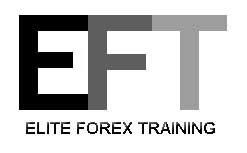While discussing Stock trading, a trader will come across some popular terms. One of the most widely used terms in the field of stock training is the Flag Chart Pattern. This flat pattern becomes especially essential when you are opting for technical analysis. But the question arises what these patterns are. What they indicate is how these patterns can be a successful factor in trading strategies.

In stock trading, flat patterns are considered as most common chart patterns. These are formed using price action and are contained within a tiny rectangle or a flag-shaped channel. The patterns can be of different types. There are bear pennant or bullish pennants present in the varieties of flag chart patterns. The small shapes of chart patterns denote lesser risk and quick profit potential of stocks. Flag patterns have a short time continuation and can mark a little consolidation. Flag patterns continue before the previous move resumes.
Flag Chart Pattern and its formation
When there is a narrow range of market consolidation after a sharp move that is nearly vertical, the flag chart pattern is created. In flag chart patterns, there is a strongly tending move which follows by a weak pullback. If there is a breakout from the market pattern, the prior trend continuation is observed. Chart patterns can give a higher risk-reward ratio bringing out high and quicker profits and small risk. The breakout in flag chart patterns tends to happen in the same direction following the preceding move. The flat chart pattern usually formed at the midpoint of a full swing and deliberately consolidated the previous price movement. The consolidation of the prior price movement made the flag chart pattern popularly known as the continuation pattern. The strong trending move present in the flag chart patterns helps in its formation and can contain gaps. The flat chart pattern can be bullish or bearish kind in variety. The flag chart patterns are considered in any time frame, but usually, they consist of around 5 to 15 price bars.
How are the flag patterns used?
The flag chart patterns are an indispensable part of technical analysis. These patterns can maximize the odds of success in trading. The continuous nature of flag patterns also helps in stock trading. This nature of flag chart patterns is applied as an entry pattern for resuming the established trend.
Types in Flag chart Patterns
- Bullish Flag pattern trading
With the help of a formed channel of resistance and support when the price moves higher and consolidated, a potential for buying is signaled. At this point, the prices are above the upward resistance line. The pattern will complete when prices break out from the trending lines maintaining the same direction off proceeding Trend. At this point, the chart pattern will continue its course. While using a bullish flag chart pattern, there must be a target that helps to estimate advance or target area. The length of the flag pole in this pattern is applied to the resistance line estimate the target area. The opportunity for trading occurs when the sideways period comes after another Shark price in the market.
- Bearish Flag Pattern trading
Just opposite of the bullish pattern, the bearish flag assumes the prices have moved downward previously. A potential for selling signal is observed after a phase of price consolidation. At this time, the price spinner tricks and is observed closing below the support line. If there is a downside break out of any short-trade, traders should place a stop loss on the high of the flag. In bearish flag patterns, they should be at the target of estimating the decline. Here the length of the flagpole is seen below the flag’s support line that can help guess the target area.
There are two best times when the flag that patterns can be favorable for trading in stock markets.
- After a breakout
When the market is bullish, and alongside, a subsequent breakdown happens, the flag patterns can be used.
- Strong trending market
On the other hand, the flat chart patterns are used in stock trading when a strong trending market.
If you are a Breakout or a swing trader, you should use the flag chart patterns as the technical analysis tools for improving your stock trading. The downtrend and uptrend nature of profit booking should be observed at the time of stock trading. The representations of the flag and the meaning of trends in the market are necessary for a trader.







